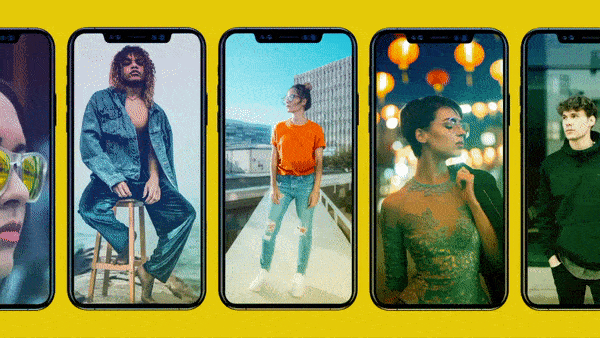Fashion may be a $2.4 trillion industry, but it is not immune to the effects of a “buy now” culture. In order to survive, fashion brands are rising to meet digital natives where they spend the most time—their phones.
Young consumers want to be able to shop for the styles they like—when they see it—whether that be online or in a magazine or worn by a model or celebrity. This type of customer journey has given birth to innovation in how a smartphone can be used to turn discovery into fashion purchases.
See It, Love It, Buy It
Google analyzed its search data and discovered that 90 percent of smartphone users begin shopping without knowing which brand they want to buy from. Marketing fashion has not only become more mobile but discovery-focused—helping consumers explore ideas based on criteria like colors, styles and patterns.
ScreenShop is a new app for iOS and Android beta that converts screenshots into a mobile store. Users take a screenshot of the fashions they like, import it to the app and the technology generates shopping results for the same or similar clothing.
Kim Kardashian West, an advisor for ScreenShop and minority shareholder, told Vogue that the company is looking for more retail partners and that it wants to expand into children’s fashion.
Social shopping site LiketoKnow.it launched its own app earlier this year that also turns mobile screenshots into links to buy.
A staggering 87 percent of Pinterest users have purchased something they found while using the platform. The Pinterest Lens and Shop the Look features allow users to track down and even buy products they see inside fashion and home decor Pins.
Virtual Runways
Through augmented and virtual reality, fashion marketing is immersing consumers in the latest styles. Mobile apps are now available that allow users to try on items like shoes and make-up.
Designer Rebecca Minkoff had her 2015 fall runway show filmed in VR and introduced her own version of Google Cardboard—a branded cardboard headset that (together with a mobile phone) provides enhanced content for fans. The $25 headsets provided an intimate view of Rebecca Minkoff’s runway shows, from the models to the photographers and members of the audience.
Fashion Marketing: The Game
Dress-up games go back generations from paper dolls to mobile apps. To reach today’s mobile fashionistas, brands are partnering with fashion games to transform make-believe dress-up into grown-up purchases.
Covet Fashion is an app by CrowdStar that allows users to create outfits and enter their wardrobe choices into contests judged by the app community. Unlike dress-up games designed for young girls, Covet Fashion features e-commerce links to bring the wardrobe home. The brand recently teamed up with The Zoe Report Box of Style to cross-promote items from its fall collection.
More than 175 brands have partnered with Covet Fashion to have their fashions appear as virtual wardrobe options, which in turn can be purchased for real-life wear through an e-commerce portal.
The game’s call to action is a natural evolution of other apps like Glu Mobile’s Kendall & Kylie that aim for brand awareness by dressing up avatars in real fashions. The PacSun Kendall and Kylie’s Spring 2016 collection was integrated into the free-to-play game before the clothing was released in stores.
“When players are granted access to interact with a brand’s product, even virtually, it allows for more of an intimate connection,” Niccolo de Masi, the executive chairman and former CEO of Glu Mobile, told AListDaily.
Twenty-nine percent of fashion executives see digitization and e-commerce as the biggest opportunities of the year, according to the McKinsey & Company’s 2017 State of Fashion report. The consulting firm predicts that e-commerce luxury fashion sales will increase fourfold by the year 2020.

